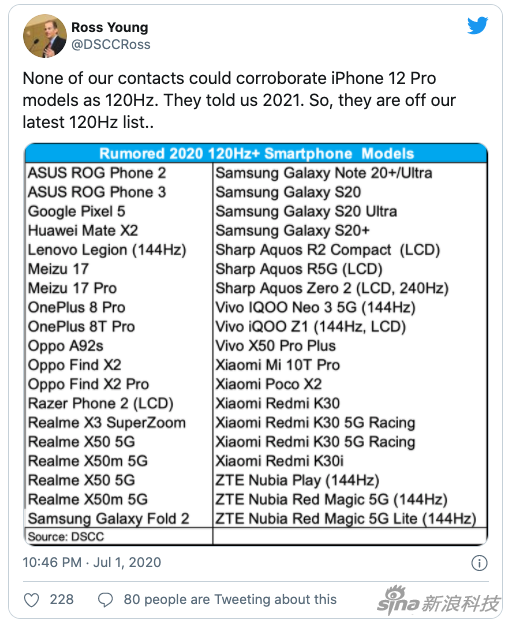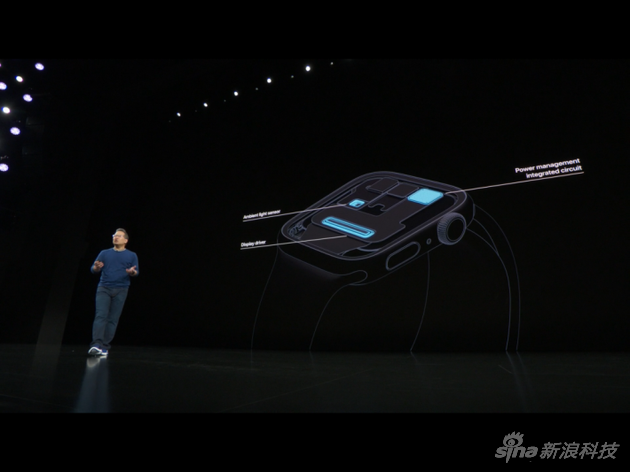>
 Ross Young tweeted that people in the industry chain do not think that the iPhone will have a high screen
Ross Young tweeted that people in the industry chain do not think that the iPhone will have a high screen
Sina Digital News July 2 morning news, according to display analyst Ross Young (Ross Young), Apple’s yet-to-be-released iPhone 12 will not be configured with a 120Hz dynamic refresh screen. Young has previously stated that Apple will not use high-brush technology unless LTPO technology can be mass-produced.
At present, high refresh rate screens have been adopted by many Android flagships. It refers to LCD or OLED screens with a refresh rate of 90 Hz or higher, in order to have a better experience in games or videos.
Recently, Jon Prosser, who frequently broke the news, has made a statement that the 2020 iPhone 12 will use a high refresh rate screen. DigiTimes, a media focused on the industry chain, also said that Apple is planning to launch an iPhone with a 120Hz display.
Ross Young, who spoke today, said that all iPhone models in 2020 will not use high refresh rate screens. He is unable to confirm that the industry chain acquaintances will load a dynamic high refresh rate screen on the iPhone 12 series.
He said these new display panels will appear with the iPhone 13 series in 2021. Young has previously claimed that the iPhone 12 generation lacks low-temperature polycrystalline oxide (LTPO: Low Temperature Polycrystalline Oxide) panels. He believes that this technology is essential for high refresh rate screens.
 LTPO was used in the fifth generation of watches before completely
LTPO was used in the fifth generation of watches before completely
LTPO technology has been commercialized, with higher electron mobility, stability and other characteristics. It is considered a new technology that can further reduce the power consumption of smart phones. Previously, Apple’s Apple Watch Series5 realized the function of always-on display just because of it.
It seems logical that Apple transplanted it to the iPhone product line, but according to Ross Young, the industry chain does not seem to be fully prepared.

